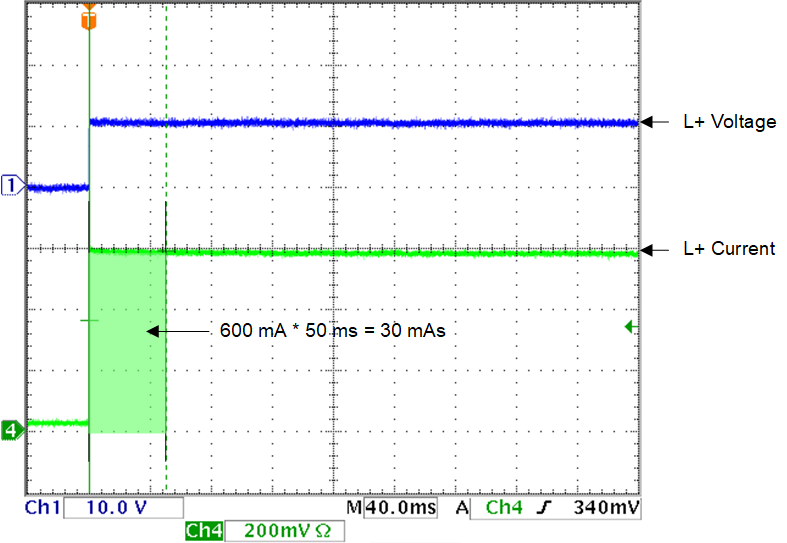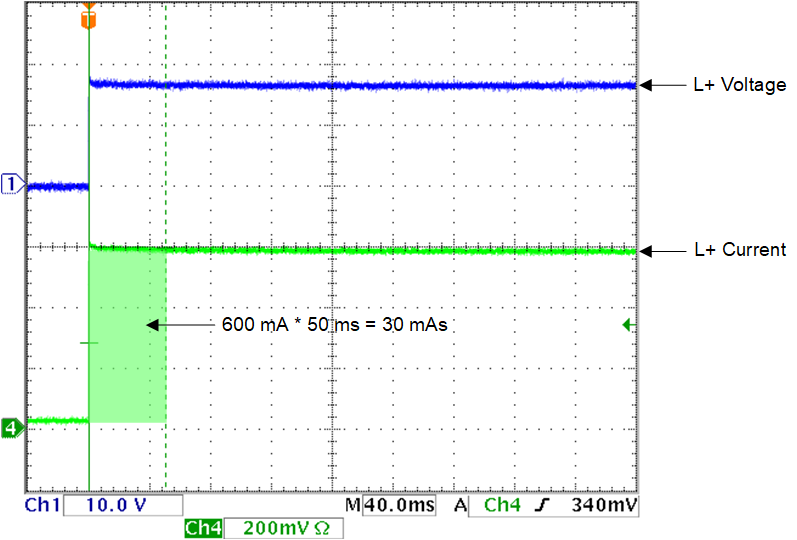TIDUCU8A september 2022 – may 2023
3.3.1 Power Supply Inrush Tests (TCM_PHYL_INTF_ISIRM)
This test case tests the behavior of a master during inrush on the L+ line. A load of at least 1000 mA is to be connected and the charge during inrush has to be observed. For this test a resistive load is used, the current as well as the voltage on the L+ and L- is observed. It is done with PSM = 20 V and PSM = 30 V. The charge going into the load is monitored and must be more or equal to 20 mAs.
 Figure 3-1 TCM_PHYL_INTF_ISIRM with 20
V
Figure 3-1 TCM_PHYL_INTF_ISIRM with 20
VFigure 3-3 shows the behavior at a supply voltage of 20 V and a load of about 18 Ω. The current gets limited to 600 mA by the TPS274160 high side switch. Thus the output voltage is limited to 10 V. During the first 50 ms, a charge of 30 mAs is provided by the master.
 Figure 3-2 TCM_PHYL_INTF_ISIRM with 30
V
Figure 3-2 TCM_PHYL_INTF_ISIRM with 30
VFigure 3-2 shows the same test with a supply voltage of 30 V. Therefore a resistive load of 28 Ω is used. The current is still limited to 600 mA, the voltage goes up to about 16 V. Important is the charge in the first 50 ms is here also 30 mAs and fulfills the requirements by the standard.